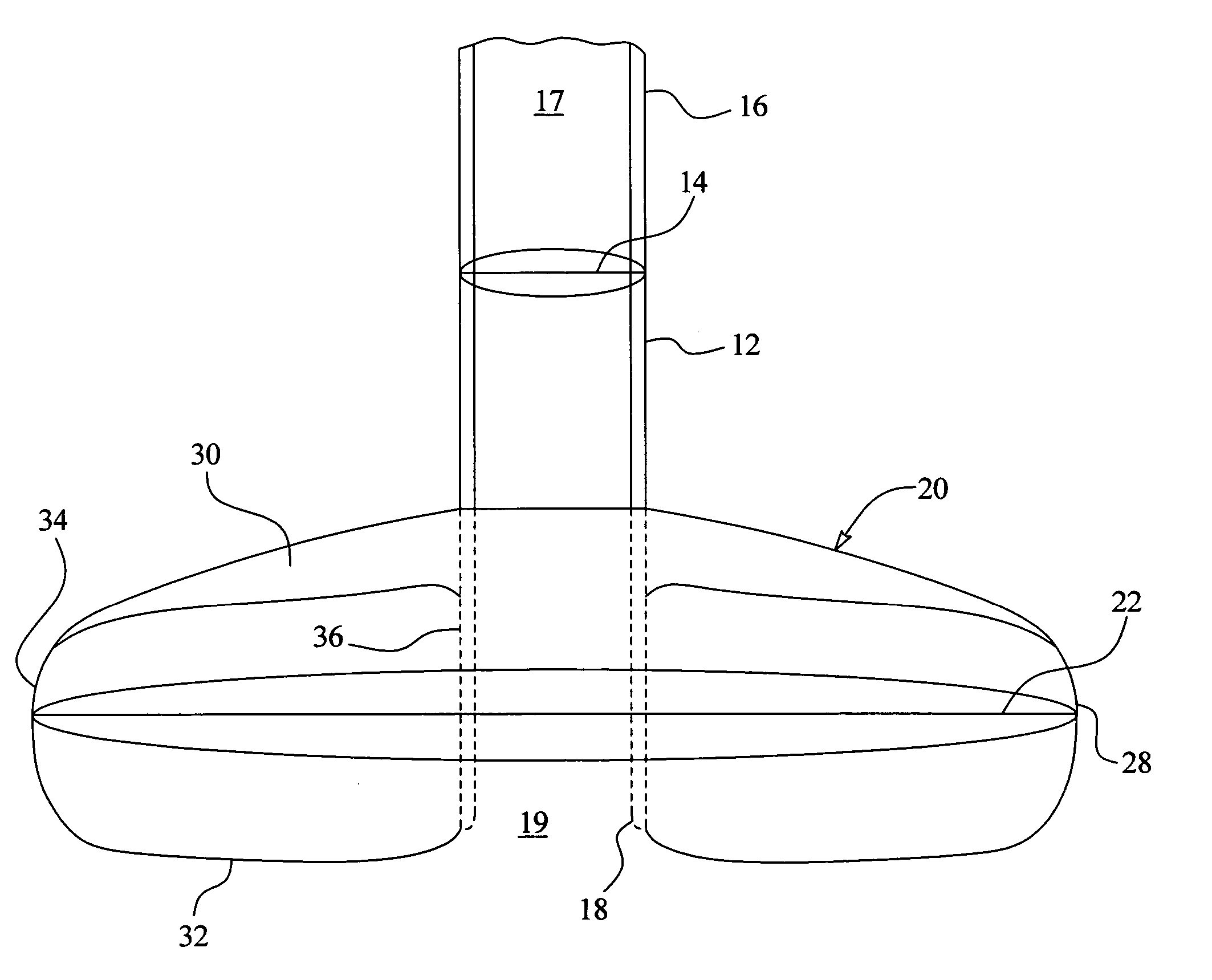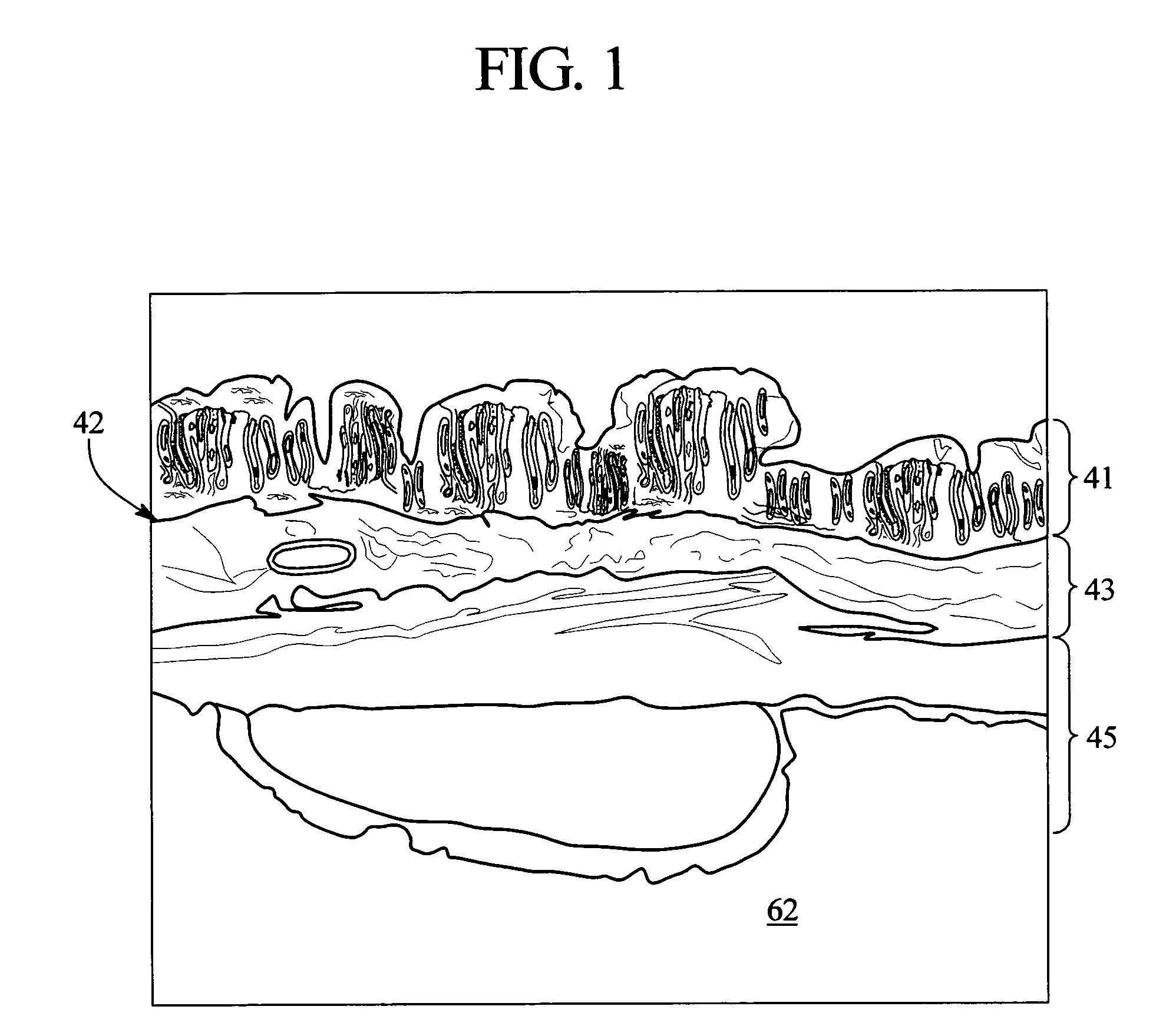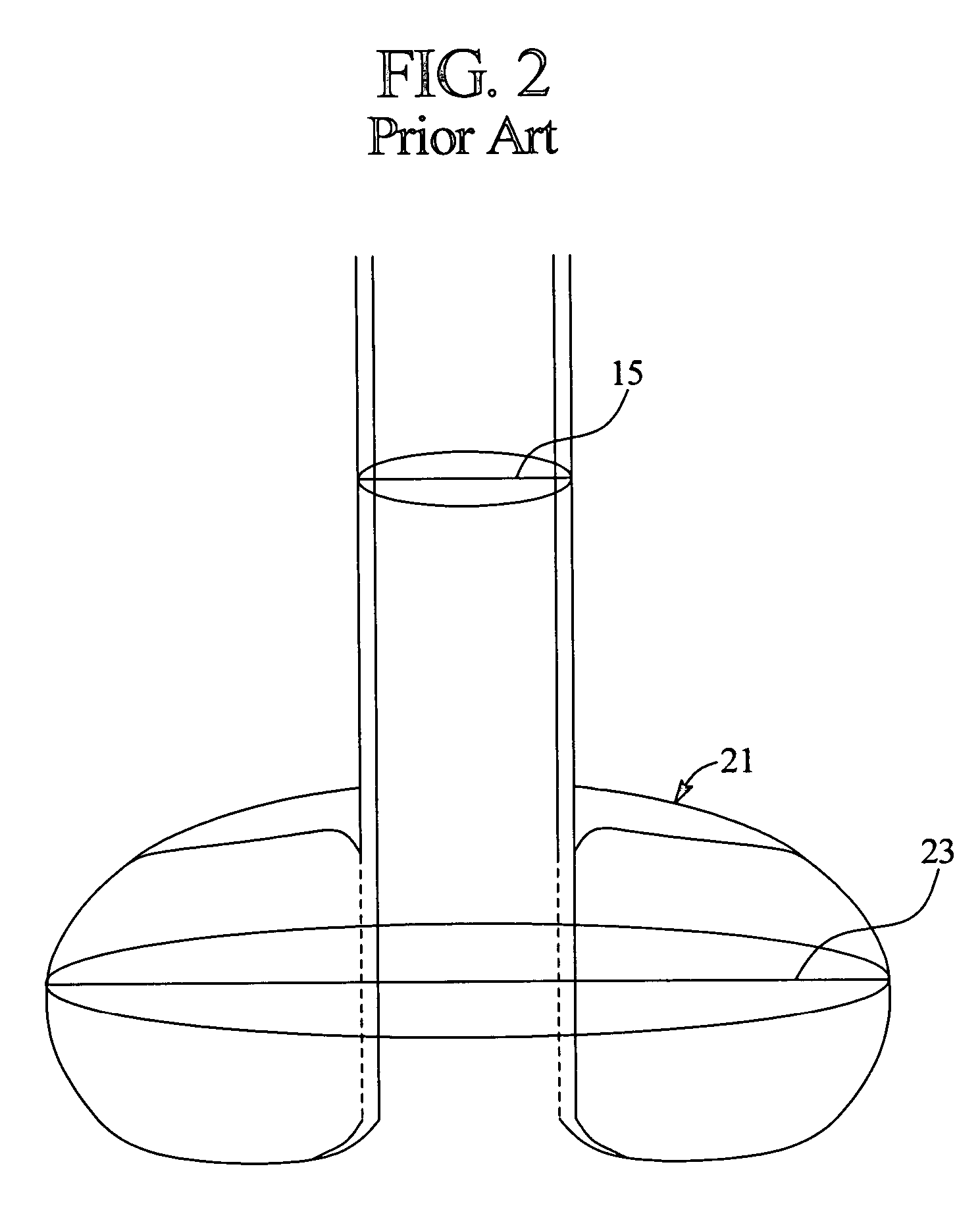System and method for securing a medical access device
access system technology, applied in the field of system and a method for securing a medical access device, can solve the problems of affecting the function, viability, and disruption of the structure of the internal components of the body, and achieve the effect of reducing the effect of retention pressur
- Summary
- Abstract
- Description
- Claims
- Application Information
AI Technical Summary
Benefits of technology
Problems solved by technology
Method used
Image
Examples
example
[0046] In one embodiment of the present invention, an internal retention bolster having an outside diameter at its outer surface of approximately 0.900 inches is associated with a PEC tube having an outside diameter of approximately 0.160 inches (12 French). Therefore, the outside diameter of the bolster is 5.625 times the outside diameter of the PEC tube.
[0047] It should be appreciated that the proportions of the enlarged internal retention bolster of the present invention can be adapted to be associated with any size tubular member of any type of access device. In one embodiment, the diameter of the tubular member is based on the flow requirements and flow characteristics of the infusion material to be passed through the tubular member. For example, a tubular member delivering a viscous solution, such as an enteral nutrition formula, may require a greater diameter than a tubular member delivering a less viscous solution, such as an irrigant, if the same rate of flow under the sam...
PUM
 Login to View More
Login to View More Abstract
Description
Claims
Application Information
 Login to View More
Login to View More - R&D
- Intellectual Property
- Life Sciences
- Materials
- Tech Scout
- Unparalleled Data Quality
- Higher Quality Content
- 60% Fewer Hallucinations
Browse by: Latest US Patents, China's latest patents, Technical Efficacy Thesaurus, Application Domain, Technology Topic, Popular Technical Reports.
© 2025 PatSnap. All rights reserved.Legal|Privacy policy|Modern Slavery Act Transparency Statement|Sitemap|About US| Contact US: help@patsnap.com



